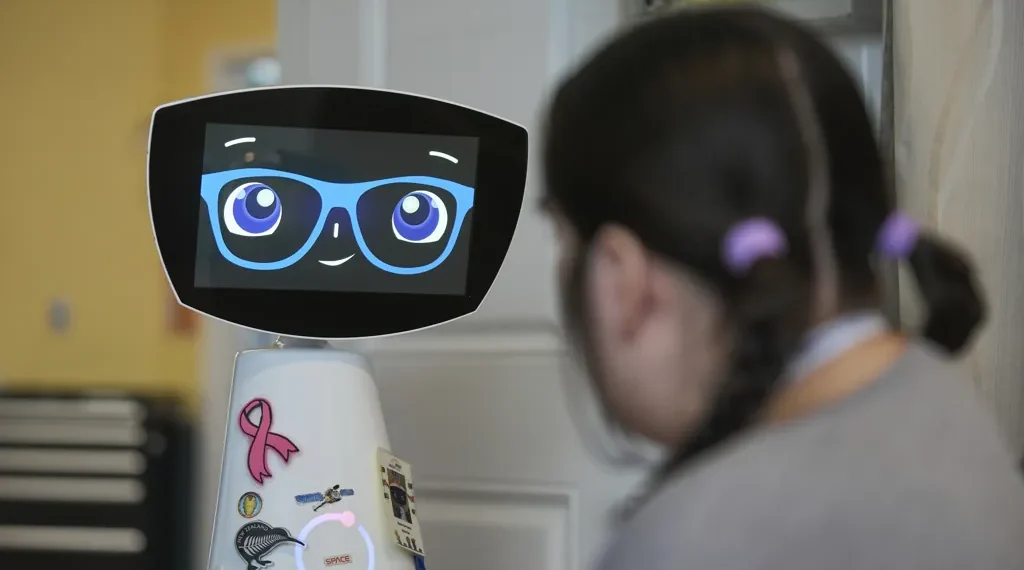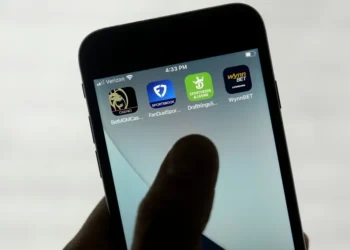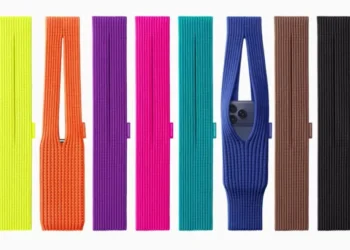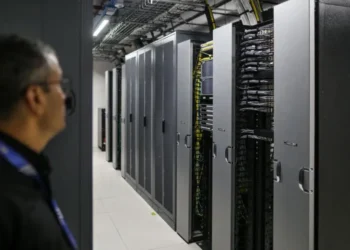Robin the Robot Brings Emotional Support to Children in Hospitals as AI Helps Ease Fear, Loneliness, and Staff Shortages in U.S. Healthcare
Published Time: 09-19-2025, 15:45 EDT
Hospitals across the United States are turning to artificial intelligence for more than just data management. Robin the Robot, an AI-powered companion designed to act like a seven-year-old child, is helping young patients cope with fear, stress, and loneliness during medical treatment. Already in use at more than 30 healthcare facilities, Robin has become a valuable tool for both patients and staff.
A Childlike Companion in Difficult Times
In June, six-year-old Luca, recently diagnosed with leukemia, met Robin at UMass Memorial Children’s Medical Center in Worcester, Massachusetts. When Robin greeted him by name, his mother, Meagan Brazil-Sheehan, was taken aback by his joyful reaction.
“His face lit up,” she said. “It was so special because she remembered him.”
Standing four feet tall with a triangular body designed for hugs and a digital face displaying expressive cartoon-like features, Robin is programmed to talk, laugh, and mirror the emotions of those it interacts with. It can play games, listen to music, and even demonstrate medical procedures through animated videos, helping children understand what to expect during treatment.
How Robin Works
Robin is about 30% autonomous, with the rest of its actions managed remotely by human operators under clinical supervision. According to Karen Khachikyan, CEO of Expper Technologies, the Armenian startup behind Robin, each interaction provides valuable feedback for improving its emotional intelligence.
“Imagine a pure emotional intelligence like WALL-E,” Khachikyan said, referencing the 2008 animated film. “We’re trying to create that.”
The robot mirrors emotions, offering laughter when patients are happy and sympathetic expressions when they share worries. In pediatric wards, Robin plays tic-tac-toe, sings songs, or cracks jokes with silly props. In nursing homes, it leads breathing exercises, helps with memory games, and provides companionship to people living with dementia.
Impact on Patients and Families
At HealthBridge Children’s Hospital in Orange County, California, staff members schedule Robin’s rounds as if it were another member of the care team.
Speech language pathologist Samantha da Silva explained, “Patients light up when Robin comes into their room. She not only remembers their names but also their favorite music. She brings joy to everyone.”
Robin’s interventions have had measurable emotional effects. In one case at a Los Angeles nursing facility, a woman experiencing a panic attack asked specifically for Robin. By playing Elvis Presley songs and showing videos of puppies, the robot helped calm her until her symptoms subsided.
For parents, Robin also eases difficult medical procedures. Micaela Cotas, a certified child life specialist, described how Robin helped Luca prepare for an IV insertion. “Robin showed a cartoon of herself getting an IV, just like a peer,” she said. “It reassures kids that they aren’t alone.”
Addressing Workforce Shortages
The rise of therapeutic robotics comes at a time when U.S. healthcare faces mounting staffing challenges. The Association of American Medical Colleges projects a shortage of up to 86,000 physicians within the next decade. Nurses and clinical staff are already under significant strain, with limited capacity for extended patient interaction.
“Medical staff are really overworked and under a lot of pressure,” Khachikyan said. “Robin helps alleviate that by providing engagement and connection.”
Expper Technologies envisions future versions of Robin capable of measuring vital signs, monitoring patient well-being, and relaying data to healthcare providers. Longer-term goals include assisting elderly patients with daily activities such as dressing or mobility support.
“Our goal is to design the next evolution of Robin,” Khachikyan said. “Not to replace healthcare workers, but to fill gaps and become an essential part of care delivery.”
From Armenia to American Hospitals
Robin’s origins are deeply personal. Khachikyan, who grew up in a single-parent household in Armenia, often felt lonely as a child. During his Ph.D. studies, he began designing a robot that could act as a reliable friend.
Initially tested in several industries, Robin found its niche in pediatric care when investors pointed out the emotional challenges young patients face in hospitals. After a successful trial in an Armenian children’s hospital, Robin launched a pilot program in 2020 at UCLA Mattel Children’s Hospital.
Since then, its character and personality have evolved through real-world feedback. For example, when asked about its favorite animal, Robin originally answered “dog” or “cat.” Neither response delighted children. But when it answered “chicken,” kids laughed so much that developers made the quirky choice permanent.
“We created Robin’s personality by really taking users into the equation,” Khachikyan explained. “In many ways, Robin was designed by the patients themselves.”
The Future of Emotional AI in Healthcare
As artificial intelligence becomes increasingly embedded in healthcare — from digital recordkeeping to diagnostic tools — Robin stands out for its emphasis on emotional intelligence. Rather than replacing clinical expertise, it offers companionship and psychological relief at moments when human caregivers may be stretched thin.
For families like the Brazil-Sheehans, Robin has already proven its worth. A simple interaction — a remembered name, a shared laugh, or a demonstration of courage — can ease the fear of a young child facing illness.
With 30 hospitals and care facilities already hosting Robin and expansion plans underway, the little robot with a big heart may play an ever-larger role in humanizing healthcare.
This article was rewritten by JournosNews.com based on verified reporting from trusted sources. The content has been independently reviewed, fact-checked, and edited for accuracy, neutrality, tone, and global readability in accordance with Google News and AdSense standards.
All opinions, quotes, or statements from contributors, experts, or sourced organizations do not necessarily reflect the views of JournosNews.com. JournosNews.com maintains full editorial independence from any external funders, sponsors, or organizations.
Stay informed with JournosNews.com — your trusted source for verified global reporting and in-depth analysis. Follow us on Google News, BlueSky, and X for real-time updates.













